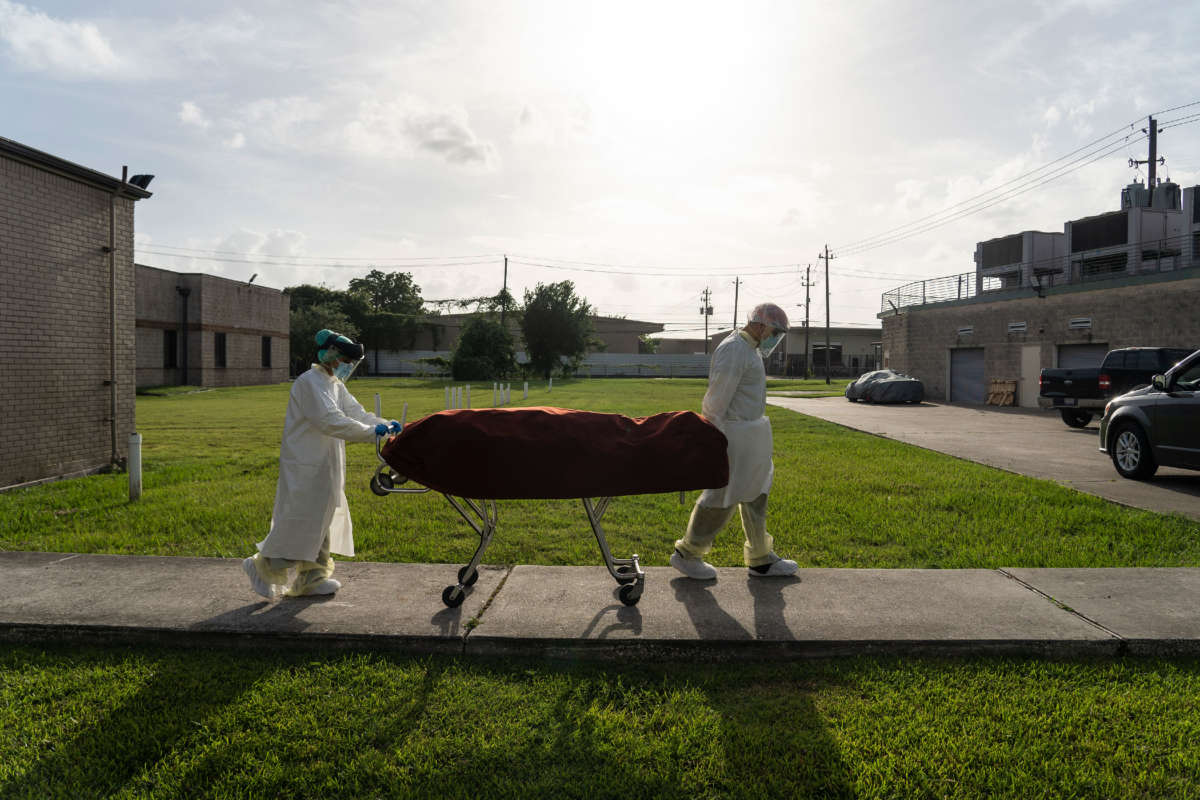A new study published this week suggests that tens of thousands of deaths in the United States have not been included in national COVID-19 death tolls despite the fact that many of those fatalities are likely attributable to the disease.
The Yale School of Public Health looked at total deaths in the country from the beginning of March to the end of May and found that 781,000 Americans died — a count that is 19 percent higher than what was typically seen in previous years.
Of the 122,300 deaths that exceeded expected numbers, 95,235 were attributed to coronavirus. But that left more than 27,000 excess deaths unaccounted for — a number that Yale researchers believe should be added to the official death toll.
“Our analyses suggest that the official tally of deaths due to COVID-19 represent a substantial undercount of the true burden,” epidemiologist and lead author of the Yale study Dan Weinberger said to CNBC.
COVID can affect different organ systems, so it’s possible that a death from a heart attack, for example, wouldn’t be attributed to coronavirus, even if the illness was responsible for causing it. The Yale study also pointed out a high number of excess deaths that occurred after patients reported having an “influenza-like illness.”
Some other excess deaths may have been indirectly caused by coronavirus. For example, a number of people may have died from other illnesses because they chose not to go to the hospital in order to avoid COVID-19. Researchers don’t believe, however, that indirect excess deaths were as numerous as deaths directly caused by the coronavirus.
The findings announced this week are consistent with other studies from earlier this year. Research from Yale conducted in April found that as many as 9,000 deaths from March 8 to April 11 were likely caused by the COVID-19 but not included in official death tolls.
There are no signs of coronavirus abating anytime soon in the United States. Indeed, on Wednesday, more than 52,000 cases of coronavirus were identified across the country, the highest single-day count so far since the pandemic reached the U.S.
In total, around 2.7 million coronavirus cases have been identified in the country, and more than 128,000 Americans have died from the illness, according to Johns Hopkins University. The Institute for Health Metrics and Evaluation (IHME) at the University of Washington also predicts that the death toll could reach 175,000 by October 1 — although, according to the researchers’ calculations, that number would be significantly lower if everyone wore a mask to prevent the spread of COVID-19.
Join us in defending the truth before it’s too late
The future of independent journalism is uncertain, and the consequences of losing it are too grave to ignore. To ensure Truthout remains safe, strong, and free, we need to raise $24,000 by the end of today. Every dollar raised goes directly toward the costs of producing news you can trust.
Please give what you can — because by supporting us with a tax-deductible donation, you’re not just preserving a source of news, you’re helping to safeguard what’s left of our democracy.
